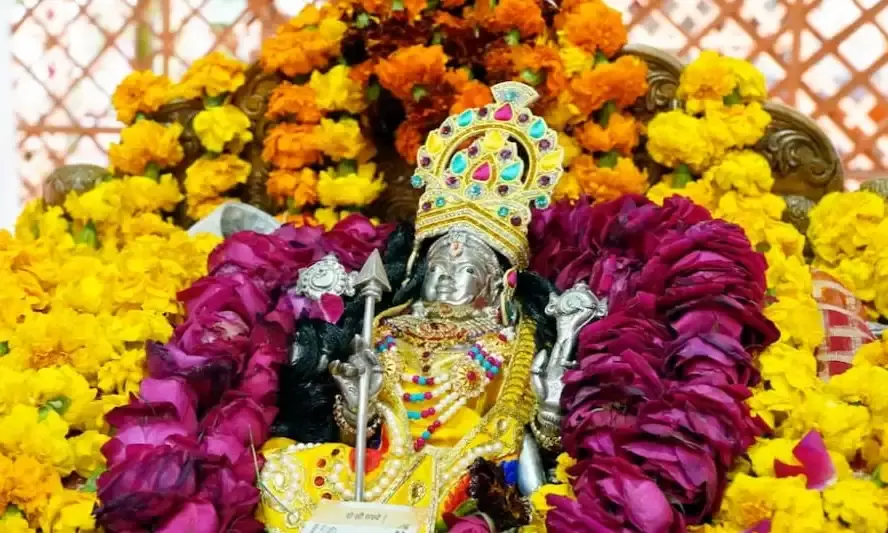Ayodhya's Golden Day: Ramlala Enters Garbhagriha, Modi Leads 11-Day Ritual
On a momentous Thursday, January 18, 2024, Ramlala, the revered idol of Lord Rama, found his permanent abode in the sanctum sanctorum of the newly built Ram Mandir in Ayodhya.;

Ayodhya: On a momentous Thursday, January 18, 2024, Ramlala, the revered idol of Lord Rama, found his permanent abode in the sanctum sanctorum of the newly built Ram Mandir in Ayodhya. In a four-hour ceremony steeped in faith and fervor, witnessed by thousands with bated breath, the idol was ceremoniously enthroned, marking a historic chapter in the decades-long saga of the temple.
The day began with a vibrant procession, a tapestry of saffron and marigold hues, carrying Ramlala from his temporary abode in the makeshift temple to his new home. Prime Minister Narendra Modi, his eyes glistening with tears, led the way, bearing the idol aloft on his shoulders. Chants of "Jai Shri Ram" echoed through the air, weaving a symphony of devotion that resonated across the nation.
At the threshold of the garbhagriha, adorned with sandalwood and gold, Ramlala was gently placed on the throne. The sanctified air thrummed with the murmur of prayers and the rhythmic cadence of Vedic hymns. Priests, adorned in saffron robes, performed elaborate rituals, anointing the idol with holy water and offering flowers and precious offerings.
PM Modi: Witness and Participant:
Beyond his ceremonial role, Modi also embarked on an 11-day ritual called "Pran Pratishtha," an age-old tradition to sanctify and energize the deity. This act, unprecedented for a Prime Minister, underscores the spiritual significance of the occasion and reaffirms his government's close association with the temple's construction.
The enthronement and Pran Pratishtha are not mere rituals; they are symbolic milestones. They represent the culmination of the decades-long struggle for a Ram Mandir in Ayodhya, a testament to the enduring faith of millions. The events also hold immense political significance, potentially shaping the future of the nation.
However, the event is not without its political undercurrents. The BJP government's ardent involvement and Modi's presence are bound to be interpreted as strategic moves, potentially impacting the upcoming elections. While concerns about potential religious tensions linger, the government maintains that the Ram Mandir will be a unifying symbol for all Indians.
As the doors of the sanctum sanctorum closed, marking the completion of the ceremony, a new chapter unfolded for Ayodhya. The city, steeped in mythology and steeped in history, now wears a golden crown, ready to welcome devotees and tourists from across the globe. The future holds its own challenges and uncertainties, but for now, Ayodhya basks in the warm glow of faith and the reverberations of "Jai Shri Ram."
While the Ram Mandir's construction nears completion, the journey towards true harmony is far from over. The challenge lies in bridging divides, fostering tolerance, and ensuring that the temple serves as a unifying force, embracing all faiths and communities.
Ayodhya's awakening is a powerful reminder that faith can move mountains, that even the deepest wounds can heal. As the nation witnesses the Ram Mandir rise, it is an invitation to reflect, to embrace the spirit of unity, and to work together towards a brighter future for all.

